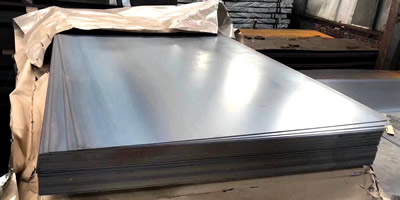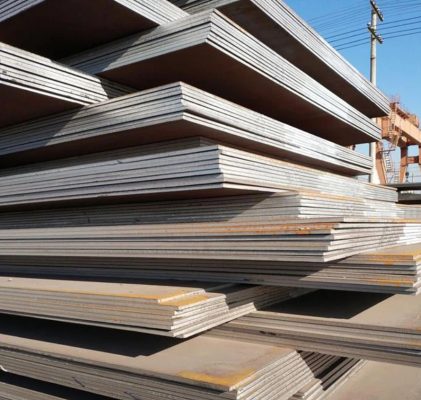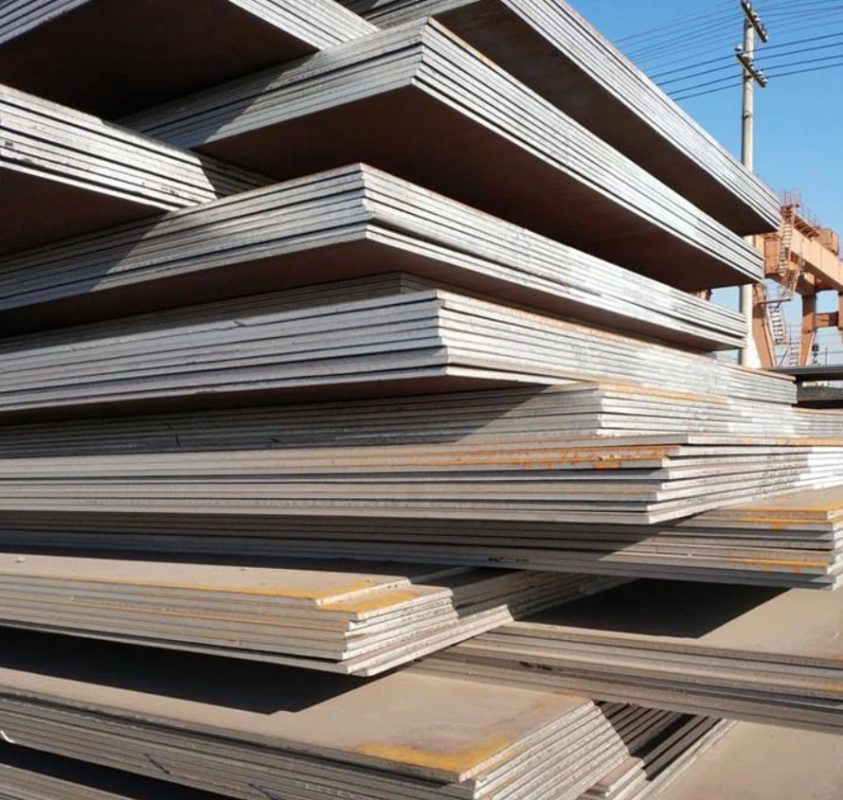Grade 60 Steel
Grade 60 steel is a designation commonly used in the United States to indicate its tensile strength. The number “60” refers to the yield strength in thousands of pounds per square inch (psi).
Equivalent Grades in Other Standards
While “Grade 60” is a specific designation in the United States, it has equivalents in other standards:
- ASTM A36: This is a common equivalent for Grade 60 steel, particularly in structural applications.
- SAE 1060: This SAE designation is also equivalent to Grade 60 steel.
- JIS S35C: This Japanese standard equivalent has similar properties to Grade 60 steel.
Note: The exact properties of these equivalent grades may vary slightly depending on the specific composition and manufacturing process.
Technical Grade 60 Steel
Technical grade 60 teräs is a general term used to describe steel that meets certain minimum quality standards for specific applications. Grade 60 steel would generally be considered a technical grade steel, as it meets the minimum requirements for many structural and mechanical applications.
Grade 60 Steel grade, also known as ASTM A615, is a widely used reinforcing steel grade in construction projects. It offers excellent strength and ductility, making it suitable for various structural applications. In this article, we will explore the equivalent grades of Grade 60 Steel from different standards.
One equivalent grade to Grade 60 Steel is Fe 500, which conforms to the Indian standard IS 1786. Fe 500 has similar mechanical properties and is commonly used in reinforced concrete structures in India. Another equivalent grade is B500B, according to the European standard EN 10080. This grade is widely used in Europe and possesses comparable characteristics to Grade 60 Steel.
In China, the equivalent grade for Grade 60 Steel is HRB 400. HRB 400 is a hot-rolled reinforcing bar that meets Chinese standards and is extensively utilized in construction projects across the country. Similarly, in Russia, Grade 60 Steel is equivalent to A500C, which complies with the Russian standard GOST 5781.
It is essential to consider these equivalent grades when working on international projects or consulting diverse engineering specifications. By understanding the corresponding grades, professionals can ensure compliance and effectively communicate their requirements in different regions.
In summary, Grade 60 Steel, or ASTM A615, possesses exceptional strength and ductility. Equivalent grades such as Fe 500, B500B, HRB 400, and A500C provide a reference point for identifying similar reinforcing steel grades in Indian, European, Chinese, and Russian standards, respectively. Familiarity with these equivalents enhances collaboration between engineers and facilitates seamless communication within the global construction industry.
Grade 60 steel is a high-strength structural carbon steel that is commonly used in construction and other applications where strength and durability are important. It is known for its high yield strength, which is the minimum stress that the steel can withstand before it begins to deform plastically.
Grade 60 Steel Equivalents table
| USA | 1059, 1060, 1064, C1060, G10590, G10600, G10640 |
| Japan | S58C, S60C-CSP, S65C-CSP, SWR-7 |
| European Union | 1CS60, 2C60, 2CS60, C60, C60E |
| China | 60 |
| Sweden | 1665, 1678 |
| Australia | 1060 |
| South Korea | SM58C |
Here are some of the key properties of Grade 60 steel:
- Yield strength: 60,000 pounds per square inch (psi) or 414 megapascals (MPa)
- Tensile strength: Typically between 70,000 and 90,000 psi (483-621 MPa)
- Elongation: Typically between 18% and 23%
- Hardness: Typically between 180 and 220 Brinell
- Charpy impact strength: Typically between 20 and 40 ft-lb (27-54 J) at -20°F (-29°C)
Grade 60 steel is commonly used in the following applications:
- Reinforcing steel: In concrete structures, such as bridges, buildings, and parking garages
- Structural steel: In beams, columns, and other structural components
- Pressure vessels: In tanks, boilers, and other pressure-containing equipment
- Machinery: In shafts, gears, and other machine components
Grade 60 steel is available in a variety of shapes and sizes, including:
- Bars: Round, square, and rectangular bars
- Plates: Flat plates of various thicknesses
- Shapes: Angles, channels, and other structural shapes
Grade 60 steel is a versatile and durable material that is well-suited for a wide range of applications. It is a popular choice for construction projects due to its high strength-to-weight ratio and excellent performance in harsh environments.

Equivalents of Grade 60 Steel
In the realm of construction and engineering, Grade 60 steel is a widely used material known for its exceptional strength and durability. However, delving deeper into the subject reveals that there exist several equivalents to Grade 60 steel, each with its unique properties and benefits that cater to specific project requirements. Let’s embark on a journey to uncover the mystery surrounding these equivalents.
One prominent equivalent to Grade 60 steel is ASTM A572. Renowned for its high yield strength and excellent weldability, ASTM A572 is an ideal choice for structural applications. Its composition of alloying elements imparts superior resistance to atmospheric corrosion and enhances the overall performance of the steel. With a variety of grades available, engineers can select the most suitable option based on specific design needs and desired mechanical properties.
Another noteworthy alternative worth exploring is European standard S355. This steel grade exhibits remarkable toughness and impact resistance, making it highly suitable for structures subjected to dynamic loads. S355 surpasses Grade 60 steel in terms of both strength and ductility, offering engineers greater flexibility during the design process. Additionally, its weldability and formability characteristics make it a preferred choice for a wide range of applications.
Moving across continents, we encounter the Australian Grade 350 steel. With its unique chemical composition and mechanical properties, Grade 350 steel presents itself as a formidable counterpart to Grade 60 steel. It boasts enhanced weldability, improved resistance to brittle fracture, and exceptional structural integrity. Builders and engineers in Australia often turn to Grade 350 steel for its versatility and reliability in constructing various infrastructure projects.
while Grade 60 steel remains a popular choice for many construction projects, it is crucial to recognize the existence of its equivalents. ASTM A572, European standard S355, and Australian Grade 350 steel offer compelling alternatives, each with distinct advantages. By understanding these equivalents and their unique attributes, engineers can make informed decisions, ensuring optimum performance and safety in their structural designs. Embrace the opportunity to explore these mysterious counterparts, broadening your knowledge and expanding your options in the world of steel construction.
Grade 60 Steel: Chemical Properties
Grade 60 steel is a general-purpose carbon steel known for its balance of strength and ductility. Its chemical composition typically includes the following elements:
| Element | Weight Percentage |
|---|---|
| Carbon (C) | 0.55-0.65 |
| Manganese (Mn) | 0.70-1.00 |
| Phosphorus (P) | ≤0.04 |
| Sulfur (S) | ≤0.05 |
| Silicon (Si) | 0.20-0.35 |

Key Chemical Properties of Grade 60 Steel
- Carbon Content: The higher carbon content compared to mild steel (typically 0.20-0.30% C) gives Grade 60 steel increased strength but reduces ductility.
- Mangaanipitoisuus: Manganese improves the steel’s hardenability, meaning it can be heat-treated to achieve a desired hardness.
- Phosphorus and Sulfur: These elements are kept to low levels to prevent brittleness.
- Silicon Content: Silicon helps to deoxidize the steel during its production process.
Additional Properties
- Hardness: Grade 60 steel can be heat-treated to achieve a hardness ranging from Brinell 120 to 200, depending on the specific heat treatment process.
- Tensile Strength: Typically around 60,000 pounds per square inch (psi), which is where the grade number “60” comes from.
- Yield Strength: Approximately 40,000 psi.
- Elongation: Around 20-25%.
- Reduction of Area: Approximately 50-60%.
Note: These properties can vary slightly depending on the specific composition of the steel and the manufacturing process.
Mechanical Properties of Grade 60 Steel
Grade 60 steel is a general-purpose carbon steel known for its balance of strength and ductility. Its mechanical properties are as follows:
Tensile Properties
- Tensile Strength: 60,000 psi (pounds per square inch) or 415 MPa (megapascals)
- Yield Strength: 40,000 psi or 275 MPa
- Elongation: 20-25%
- Reduction of Area: 50-60%
Hardness
- Brinell Hardness: 120-200 (can be increased through heat treatment)
Impact Strength
- Charpy Impact: Varies depending on heat treatment and temperature.
Fatigue Strength
- Fatigue Limit: Approximately 30,000 psi
Other Properties
- Machinability: Good, similar to AISI 1330 steel.
- Formability: Good due to its ductility.
- Hitsattavuus: Good, but preheating may be required for thicker sections.
Note: These properties can vary slightly depending on the specific composition of the steel and the manufacturing process.


